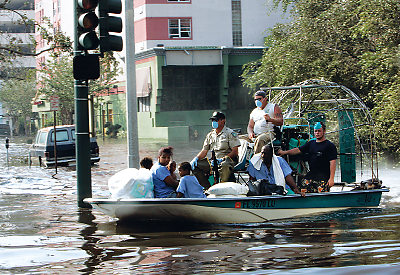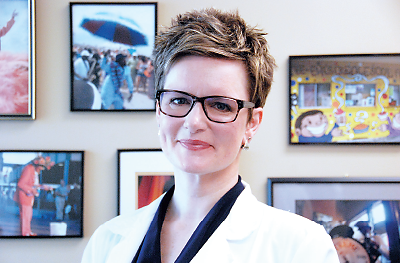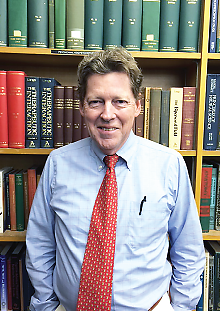Hurricane Katrina Is No Distant Memory to Gulf Coast Clinicians
Abstract
The hurricane that devastated New Orleans and the Mississippi coast left an indelible imprint on the minds of the mental health professionals who helped cope with the aftermath. This is the first article in a two-part series.
Hurricane Katrina may seem long ago and far away to most Americans, but to mental health professionals in Louisiana and Mississippi who survived the storm and its aftermath, its presence still looms.

Hurricane Katrina and its aftermath devastated New Orleans and the surrounding areas, leaving more than 1,800 people dead and displacing hundreds of thousands more. Psychiatrists and other clinicians who lived through that time have spent years putting the mental health system—and their lives—back together.
“Katrina is something we’ve lived with for 10 years,” said Anthony Speier, Ph.D., now an associate professor of clinical psychiatry at Louisiana State University (LSU) in New Orleans. More than 1,800 people died, and the Gulf Coast sustained $108 billion in property losses.
The city of New Orleans was nearly emptied of its population for a month after the August 29, 2005, hurricane and subsequent flooding. Its citizens dispersed across the country, and while most eventually returned, many did not. A second hurricane, Rita, struck Louisiana and Texas on September 24.
“We all have a sense of expectations and beliefs about stability in the world,” said Speier, who managed Louisiana Spirit, the federally funded crisis counseling program emplaced after the storm. “In Katrina, the flooding and displacement meant that the normal anchors of life were in disarray and that stability was no longer available and had to be re-established.”
Along with everything else, the mental health infrastructure received major blows.
Most prominently, Charity Hospital, the towering home to the most psychiatric beds in the region and a major clinical site for LSU and Tulane University, was closed and never reopened, he said. The old university hospital closed but reopened in 2006 as the Interim LSU Hospital until it was replaced this month by the new University Hospital. Some additional inpatient space was created at other area hospitals, as well.
“The recovery of the mental health system has been progressive but uneven,” said Howard Osofsky, M.D., Ph.D., then and now a professor and chair of the department of psychiatry at the LSU Health Science Center School of Medicine in New Orleans, in an interview.
The system’s human infrastructure was decimated too. Osofsky went to Baton Rouge for a time. His counterpart then at Tulane University, Dan Winstead, M.D., relocated temporarily with the rest of his department to Baylor University in Houston.
“I was a circuit rider,” said Winstead. “I’d stop at Jackson [La.] State Hospital, Baton Rouge, or Houston and hold a teleconference every other week.”
Martin Drell, M.D., then head of the New Orleans Adolescent Hospital (NOAH), evacuated with hospitalized children and teenagers who couldn’t contact their parents because the phone system wasn’t operating.
“Nobody understands what life is like without any communications,” he said. He ended up in Baton Rouge for nine months with his staff, where they worked in schools and hospitals. Drell even bunked in the nurses’ office for a while.
“I was running a big hospital system, so I was used to bumps and bruises, but we had more than usual then,” said Drell, now a professor and training director for child psychiatry at LSU. “I’m a problem solver and I had lots of problems, so in some ways I was content.”
Katrina was equally disruptive for those at the beginning of their psychiatric careers. Residents in the city’s two training programs were scattered but not necessarily to where their patients relocated.

“People in New Orleans have made an amazing comeback,” said Cynthia Fields, M.D., a psychiatry resident at Tulane when Hurricane Katrina struck. “It’s pretty impressive how people move on.”
“What comes back to me is the sense of incredible loss,” said Cynthia Fields, M.D., then the chief resident at Tulane University’s School of Medicine and today a geriatric neuropsychiatrist at MedStar Health Good Samaritan Hospital in Baltimore. “It was striking how quickly everything could change. I worked at Charity for eight months, and then it was gone.”
Providing mental health care suddenly became more difficult after the storm as resources were cut and patients were dispersed around the country. Then there was the reality of coping with one’s own storm-related troubles.
“It’s hard to take care of somebody else when you can barely take care of yourself,” said Fields. She hoped to remain in New Orleans, but when a fellowship at Tulane evaporated, she took another at Johns Hopkins and remained in Baltimore.
Nicholas Pejic, M.D., was a resident at LSU. Today he is in private practice in New Orleans and occasionally lectures on neuropsychiatry at his alma mater. Many of the usual bonds engendered in residency were broken as residents lost touch with one another. Like everyone else, he was faced with a choice: “Do I stay or do I go?”
“My father, who lived as a boy in Nazi-occupied Belgrade, taught me that in life, there are times when you’re called to do something, to be something,” Pejic recalled. “So I decided to stick it out, because I thought it couldn’t be so bad in a couple of years. I felt challenged emotionally to be a better man, a better leader, and a better doctor.”
To help thousands of survivors cope, Louisiana Spirit ran for three years, said Speier. The program trained staff in basic counseling skills and they canvassed neighborhoods, listening to survivors tell their stories, building trust, and providing hope.
“We created a statewide program, not just in New Orleans but also in areas elsewhere in the state where people had gone,” he said. “People were immobilized because they faced so many problems at once. But it was important not to view survivors as recipients of services but as active participants in their own emotional recovery.”

Louisiana Spirit, a crisis-counseling program, helped thousands of people immobilized by simultaneous homelessness, job loss, and personal grief after Katrina, said Anthony Speier, Ph.D., its former director.
Longer-term surveillance was needed in schools and communities to detect problems.
“Hurricane Katrina was on a scale you couldn’t believe,” said Speier. “It changed the way people think about these things.”
Crisis counseling may have been a core part of the response but was not designed to treat long-term chronic problems. Osofsky and his wife, Joy Osofsky, Ph.D., a professor of pediatrics and psychiatry at LSU, developed a program that ultimately screened tens of thousands of children in the state. By chance, the Gulf area had been the subject of a psychiatric epidemiology survey two years earlier, permitting natural pre/post studies that revealed a doubling of psychiatric symptoms after the storm.
“However, that deterioration was due not just to the trauma of the hurricane but also to related and widespread adversity—the loss of jobs and schools and transportation, as well as medical and mental health infrastructure,” said Robert Ursano, M.D., a professor and chair of psychiatry and director of the Center for Study of Traumatic Stress at the Uniformed Services University of the Health Sciences in Bethesda, Md.
Looking back, those who lived and worked through Katrina and Rita found themselves changed as much as the landscape.
Winstead was philosophical: “It was a life-changing event for all of us, but it’s also something a lot of us try to forget and go forward.”
“I learned the importance of living each day with fullness,” said Speier. “We don’t dwell on the past but we can learn from the past.”
“Katrina was a hard experience but also a reminder of the privilege we have of helping people at a very difficult time,” said Howard Osofsky. “I was very impressed at how people can endure difficulty and grow as human beings in the process.”
And Katrina changed how Fields interacts with her patients now.
“I think I appreciate loss better, but I also feel more resilient,” she said in her office recently. “After Katrina, there were times in the clinic when I felt: ‘I’m done. I just can’t do it.’ But then I thought, ‘Yeah, you’ll do it. And I did.’ Now, some days when I’m here and I don’t want to hear another sad story, I think: dig deeper, you can do it—and I do.” ■



